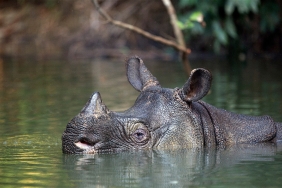PLTP MOUNT APO: DEVELOP GEOTHERMAL IN CONSERVATION AREAS
By: Indra Sari Wardhani
After taking a flight for about 4 hours from Jakarta to Manila and followed by a 1.5-hour flight to Davao, finally the first day of the WWF media trip team, with a total of 18 participants (12 journalist representatives, 2 staff representatives from the Ministry of Energy and Mineral Resources, 2 staff representatives from the Ministry of Forestry and 2 people, WWF Indonesia staff), arrived safely at Francisco Bangoy International Airport - or better known as Davao International Airport located in Davao City. Davao City is located in the southeast of Mindanao and is the regional trade center in the region.
On the second day, participants were invited to enjoy the greenery of the Mount Apo area. By late afternoon, the white mist began to descend and the chill began to set in. The trip took quite a long time from Davao City due to the long distance and the road conditions at that time were under construction. Mount Apo is the highest mountain in the Philippines which is about 40 KM from Davao City or traveled by road for 4-5 hours. For those who travel to this area for the first time, they will feel surprised because almost along the way there are many armed soldiers. Even this media trip is also escorted by the Philippine army, which is a security procedure from the Philippine Government.
Upon arriving at the location, the rain was so heavy that participants had to stay inside the EDC office and listen to interesting presentations from several resource persons, namely Eduardo V. Ragaza (Department of Environment and Natural Resources), Chief Datu Samuel Asicam (local indigenous chief), and the Executive Director of Mount Apo Foundation Inc (MAFI).
The 701-hectare Mount Apo Power Plant is located within the 64,052.59-hectare Mount Apo National Park - consisting of a core zone of 54,974.47 hectares and a buffer zone of 9,078.12 hectares. The park is home to 1,296 species of flora and fauna - including 50 endemic species, 2 critically threatened species, and 18 species categorized as considered at risk.
Interestingly, the size of Mount Apo National Park was first established in 1936 by Presidential Proclamation No. 59 with an area of 76,900 hectares. This regulation was later amended to change the designation of part of the National Park area. One of them in 1992, through Presidential Proclamation No. 853, the Philippine Government converted 701 hectares of the area within Mount Apo National Park for geothermal development. Thus, even though it is within the National Park, the legal status of the Mount Apo PLTP area is not a National Park. Changing the status of the area for the utilization of renewable energy including geothermal is possible in Philippine regulations through the recommendation of the President and approved by Congress. And in its implementation, geothermal development operating within the area is obliged to preserve the area in accordance with the established rules.





